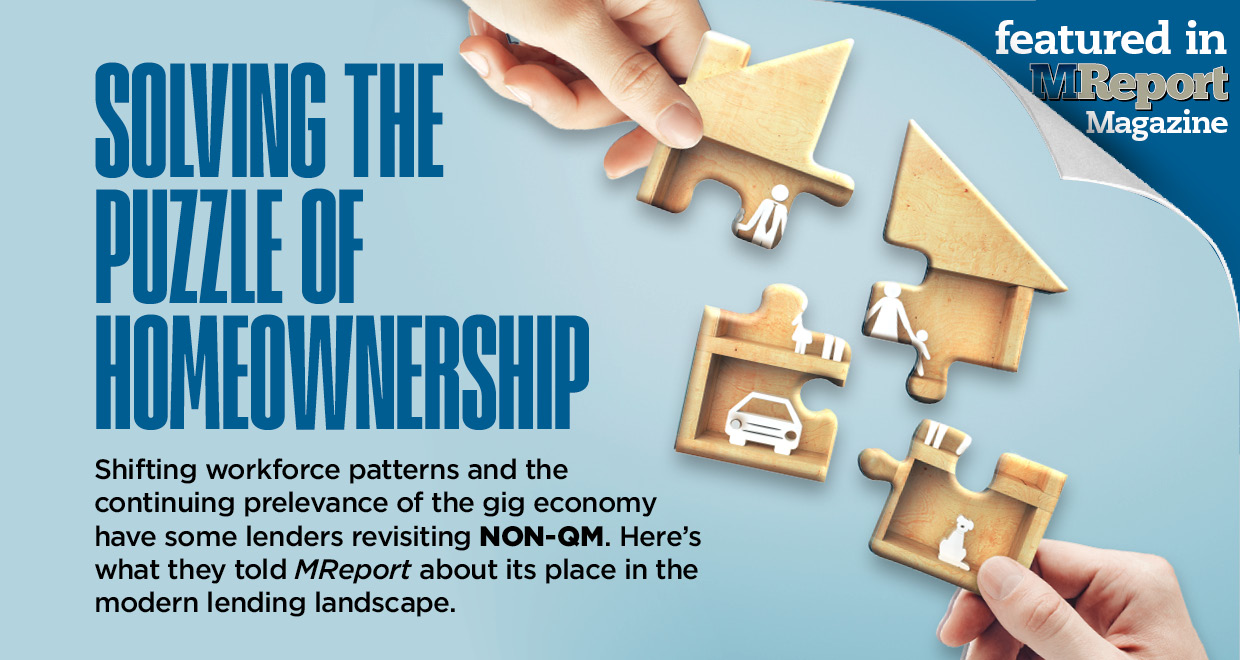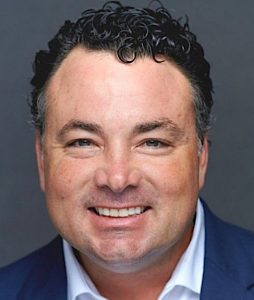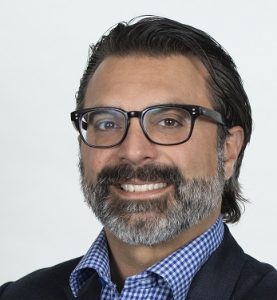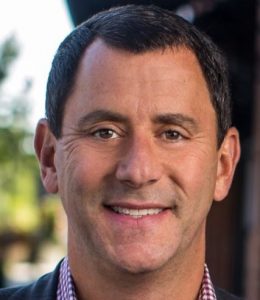
This piece originally appeared in the June 2022 edition of MReport magazine, online now.
The date of March 11, 2020 will forever be etched into the minds of all. Not quite a momentous holiday, but that date will always resonate as the date the World Health Organization (WHO) declared the COVID-19 outbreak a pandemic, thus forever changing the way of life for many worldwide.
And with this declaration by the WHO, society was introduced to some new terms. “Remote work,” “stay-in-place,” and “social distancing” were just a few of the phrases that became synonymous with the era of the pandemic, while also putting a halt to forms of income for many. Mass closures of places such as food establishments and shopping malls put a strain on the income of many, as the emerging gig economy was stifled for a period of time.
As odd as it seems, the very same factors that put many out of work, also gave birth to a new generation of gig economy workers.
Those displaced by office closures and forced career changes sought refuge in this burgeoning economy and found a new home.
Harvard Business Review characterized workers in the gig economy and freelancers as independent by choice, and although the unpredictability of schedules and finances are a factor, they are outweighed by the fact that many were earning more than their nine-to-five corporate counterparts.
As the new gig economy population grew, they were flourishing at a time when mortgage rates were hitting all-time lows and renters were fleeing the urban jungle and taking their new trade to the suburbs. The time to upgrade from renter to homeowner came during a period of great economic uncertainty, as lenders scrambled to qualify this new type of borrower that had different income to report than their traditional conforming counterparts.
By definition, a “non-QM” mortgage is a home loan that is not required to meet agency-standard documentation requirements as outlined by the Consumer Financial Protection Bureau (CFPB). Breaking the mold of tradition and convention, non-QM loans were often equated to sub-prime loans, geared toward borrowers with low credit scores and high debt. However, a non-QM loan is not necessarily deemed a “high-risk loan,” but the inclusion of terms such as “interest-only” or “limited/alternative documentation” can increase the risk of repayment for lenders.
CoreLogic reported that the non-QM share of total mortgage counts declined during the time of the COVID-19 pandemic, reaching its lowest level in 2020 at 2% of market share. As the vaccinations rolled out and the nation began to get the pandemic under control, the non-QM share nearly doubled in 2022, representing approximately 4% of the first mortgage market.
Over the years, lenders have steered away from non-QM offerings, but the emergence of markets such as the aforementioned gig economy has forced some to reconsider including non-QM on their list of offerings.
Non-QM loans are not backed by the government and do not provide the same regulatory protections that a qualified mortgage may offer. Interest rates on-QM mortgages are relatively higher than that of conventional loans due to the fact they are sold and packaged into private mortgage-backed securities (MBS) that don’t carry the payment guarantees of bonds issued by the government-sponsored enterprises (GSEs).
I addition to freelancers and gig economy workers, other candidates for non-QM loans include retirees, real estate investors, business owners, foreign nationals, and those with less-than-perfect credit scores.
MReport had a chance to chat with some of the leaders in the non-QM space to discuss the benefits of this offering, and how catering to this new generation of borrower is proving profitable.

Tom Davis
Tom Davis serves as Chief Sales Officer of Deephaven Mortgage, charged with expanding the company’s footprint and market share across the United States. Davis joined Deephaven in 2022 and has more than 20 years of experience helping partners with their agency and non-QM/non-agency needs. Founded in 2012, Deephaven is a full-service, multichannel, long-term mortgage lender in the non-QM space, providing access to financing to millions of underserved customers throughout the United States.

Jeff Gravelle
Jeff Gravelle serves as Co-Head of Production at Newrez, overseeing all origination activities across the company’s various lending channels. His career spans more than 20 years in financial services, including leadership roles in investment management, capital markets, sales, and marketing.

Michael Isaacs
With a career spanning more than 25 years, Michael Isaacs, CEO of GO Mortgage fulfilled his passion of owning a mortgage company again through the purchase of GO Mortgage in November of 2021. As former President and CEO of Residential Finance Corporation (RFC), Isaacs managed all areas of business and spearheaded significant investments in recruiting, training, and technology, enabling RFC to increase revenue 68% in four years. Prior to the acquisition of GO Mortgage, he served as RVP of Sales for Fairway Independent Mortgage Corporation from 2016-2021.

Jeff Leinan
Jeff Leinan serves as President of Plaza Home Mortgage’s Wholesale Division, responsible for all aspects of the Division’s origination, underwriting, and production. He joined Plaza in 2008, where he was responsible for Regional Sales Management for the East Coast, and in 2018, was promoted to EVP, driving the growth of the company’s wholesale, non-delegated, renovation, and reverse lending businesses. In 2019, Leinan established the company’s National Inside Sales team to provide comprehensive service to its Mortgage Broker clients, in addition to branch office coverage from its existing footprint. He was promoted to President of the Wholesale Division in February of 2022.

Jeff Leinan
Neil Merritt serves as Head of Product Strategy & Development at Newrez. Having started his lending career as a Loan Officer, Merritt has a deep understanding of the industry and the importance of competitive, high-quality products. His prior titles have included Chief Lending Officer, as well as SVP of Capital Markets and Product Development. He has a vast knowledge of mortgage product offerings and brings specific expertise in non-agency loan products, jumbo products, and proprietary loan programs to his role.
What is the current state of the non-QM marketplace?
Jeff Gravelle: The non-QM market is getting more focus these days as lenders look to expand their offerings. Non-QM loans are more complex than other loan products, so lenders must invest the time and resources to educate their sales teams and brokers.
That’s why it’s so important for mortgage professionals to work for a company that has strong non-QM underwriting expertise and one that provides the educational resources necessary to navigate the challenges common to the non-QM market. Nearly 80% of our LOs and AEs have completed and passed our non-QM-specific training to ensure they’re qualified to help meet the needs of non-QM borrowers. It is also why non-traditional borrowers should choose a lender that has experience in this field and the ability to deliver with customer satisfaction.
Michael Isaacs: The non-QM market has not been this robust since the definition of non-QM was created by the Dodd-Frank Act in July of 2010. Non-QM loans are different from the sub-prime programs that were popular prior to the financial crisis, because they require alternative forms of income documentation rather than no income documentation, which pre-crisis sub-prime or non-prime loans allowed. Additionally, there are requirements for higher down payments and higher FICOs, which many sub-prime programs did not require.
The market is growing because non-QM loans offer responsible financing options and products that make sense for borrowers who would otherwise struggle to buy a new home. There is a plethora of well-capitalized lenders offering similar non-QM products, making it easier for certain borrowers to purchase a primary residence, investment property, or second home.
Neil Merritt: The non-QM market is definitely growing; it’s expected to nearly double its market share in 2022. We are seeing a larger number of lenders who are new to the non-QM space issue their own non-QM offerings.
Non-QM loans are harder than other loan products, so lenders must invest the time, resources, and education into their sales teams and brokers to learn the intricacies of these products. That’s why it’s so important for mortgage professionals to work for a company that has strong non-QM underwriting expertise, and one that provides the educational resources necessary to navigate the challenges common to the non-QM market. In fact, nearly 80% of our LOs have undergone non-QM-specific training to ensure they’re primed to help meet the growing demand of this type of borrower. It’s also why non-traditional borrowers should choose a lender that has experience in this field and the ability to deliver with customer satisfaction.
What best describes your typical non-QM borrower?
Michael Isaacs: I find the typical non-QM borrower is a high-FICO borrower with considerable assets but has income that is hard to document. However, if you take a closer look, non-QM borrowers fall into many different buckets. The most common are self-employed borrowers, investors, and borrowers looking at high loan amounts.
Take, for example, self-employed borrowers. These borrowers often write off too much of their income and may not qualify for the conventional mortgage because their adjusted gross income keeps them from qualifying. Bank statement loans are perfect for this type of borrower. Depending on the situation, we either average 12 or 24 months of gross income from their personal or business bank statements, apply an expense ratio based on the type of business they have, and then use the balance as income to qualify.
Then, there are borrowers who are buying a one- to four-unit family home as an investment property. They may be either a W-2 employee or self-employed, but they do not qualify for conventional financing because of their debt ratio. The liability that comes with owning rental property often puts the borrower above agency guidelines for debt-to-income ratios. For this type of loan, the borrower qualifies solely based on the new property cash flow supporting the new liability. With a non-QM loan, there is no consideration for the borrower’s income or debts aside from the new property. That’s why I coin them “investor cash flow or DSCR (Debt Service Coverage Ratio)” borrowers.
Finally, there is the “non-conforming jumbo” borrower. Banks and investors that buy jumbo loans from an independent mortgage banker (IMB) have very strict guidelines due to the higher loan limits. Non-QM loans fill the gap for a borrower purchasing a property in which the loan amount is above the conforming limit, and the borrower or the property does not meet standard guidelines.
Today, borrowers typically use non-conforming jumbo loans for situations involving non-warrantable condos, high DTI ratios, low FICO, late mortgage payments in the last 12 months, credit events in the last seven years, low reserves, and non-standard income.
Neil Merritt: Our Newrez Smart Series non-QM program has three loan types, each designed for a different kind of borrower—self-employed borrowers, real estate investors, and borrowers who fall just outside of traditional qualifying limits. This product, designed for self-employed borrowers, consistently makes up around 55% to 60% of our current non-QM production, so self-employed borrowers are the most common for our offering.
How did the pandemic impact the non-QM market?
Tom Davis: After an initial pandemic-related pause in the overall mortgage market, including private label and non-QM, this segment has been extremely resilient. Investor appetite came back faster than many had anticipated, and demand is strong and growing. Industry experts expect the market to reach $300 billion over the next three to five years.
We just returned from a major industry conference, where our sales team had 90 meetings with mortgage brokers and correspondent sellers interested in increasing their non-QM market penetration.
The pandemic and the related closures of office and school buildings left borrowers scrambling for more space to work or learn from home, and this definitely contributed to the growing market demand. Having more square footage makes it easier for people to leave their jobs and start their own home-based businesses or try freelancing. There are currently approximately 16 million self-employed people in the United States, according to Pew Research Center. Many responsible, creditworthy, self-employed individuals may have a difficult time qualifying for a government-backed mortgage; however, they could be perfect candidates for a non-QM loan.
Jeff Leinan: Initially, the market froze, as investors headed for the sidelines waiting to see how these assets would perform. Without a secondary market takeout, non-bank lenders, like Plaza Home Mortgage, had to suspend our non-QM programs. In late 2020, when it became clear that non-QM loans were continuing to perform, liquidity began to gradually return. The first lenders to reopen their programs were specialty non-QM shops.
Plaza Home Mortgage is a full-service, third-party originator, and in the second half of 2020, and throughout all of 2021, our conventional and government loan businesses were hitting on all cylinders. So, we had the benefit of enhancing our non-QM program before reopening it.
What has your company done in terms of reintroducing non-QM offerings in a post-pandemic world?
Tom Davis: We have been very intentional about making it easier for our customers to expand their share of the non-QM market. Many of them have never sold or manufactured non-QM products before and see them as an important pathway to new purchase originations. Deephaven helped pioneer non-QM lending when we opened our doors in 2012. Our executive leadership has a history of being in the space, and that expertise is making our partners feel more empowered.
Building on that history, we’re working to create a best-in-class experience for mortgage brokers and mortgage lenders alike, so that they can provide that same experience for their borrowers. The pillars for our non-QM are training, technology, support, and flexibility. We’ve formed new technology partnerships and refined our processes and tools to simplify every non-QM transaction.
For example, we’ve enhanced our scenario desk and income qualification tools, and expanded our support team. Deephaven does its underwriting in-house, and that has allowed us to be very flexible with borrowers’ individual situations. That’s particularly important to our brokers who want to improve borrower loyalty through responsive, personalized service.
Of course, we’re also ensuring that our product offerings meet borrowers’ changing needs. For instance, DSCR loans have been estimated to comprise 25-30% of the non-QM market. That is reflected in demand from property investors for our DSCR products—including products with cash-out options.
Jeff Leinan: We relaunched our Solutions Non-QM Program in our Wholesale Channel last September. Our initial offerings were 12- or 24-month bank statement loans with limits up to $3.5 million. The program features LTVs to 90%, DTIs up to 55%, and FICO scores down to 660, as well as options for P&L and 1099 and condotels.
When we reopened the program, we made two significant operational enhancements. First, we added a scenario desk, so that our broker clients could get a quick indication of whether their deals would work before they got too far along in the process.
Secondly, we put in place a dedicated non-QM underwriting team to accelerate the underwriting process and help brokers. The response to both of these enhancements has been very positive.
We recently added a business purpose loan program for investors, Plaza’s DSCR Investor Solutions, that qualifies deals based on property cash flows. This program offers financing up to $3.5 million and compliments our non-QM program.
What does the future hold for non-QM offerings amidst a high-rate environment with skyrocketing housing prices?
Jeff Gravelle: Our non-QM products can provide non-traditional borrowers with the opportunity to buy a home in any market environment. In fact, one of the most meaningful advantages of offering non-QM options is the ability to serve a market that has historically had less access.
We can expect non-QM market share to remain steady. Loan Officers and Mortgage Brokers are facing a pivotal time where adaptation is necessary for success, but lenders must also provide the right amount of education and resources to mortgage professionals in order to keep customers informed and in the right products.
Michael Isaacs: Interestingly, as agency rates have increased, the difference between a prime rate and a rate for a non-QM loan has narrowed, making non-QM options more palatable for rate-conscious borrowers. Non-QM loans are also filling gaps for second homes and investment properties, since Fannie Mae and Freddie Mac made it clear they would prefer to lend on primary residences. This is the perfect time for non-QM loans, and it appears the market will continue to grow and gain additional steam amidst the new high-rate environment.
We’re continuing to add new non-QM investors to our product offerings and training our loan officers on all non-QM products because we expect this type of loan to add significant volume over the next few years.
Neil Merritt: There’s no question that 2022 has seen serious changes to the housing market. With rate increases that may continue to rise, low housing inventory and a very competitive housing market, non-QM products can provide non-traditional borrowers with the opportunity to buy a home. With the current housing market, we can expect the influx of non-QM business to remain steady. As a result, loan officers and brokers must embrace non-QM for success, and lenders must also rely on non-QM resources for mortgage professionals to keep customer satisfaction strong and mitigate risk.

 theMReport.com Your trusted source for mortgage banking news
theMReport.com Your trusted source for mortgage banking news








